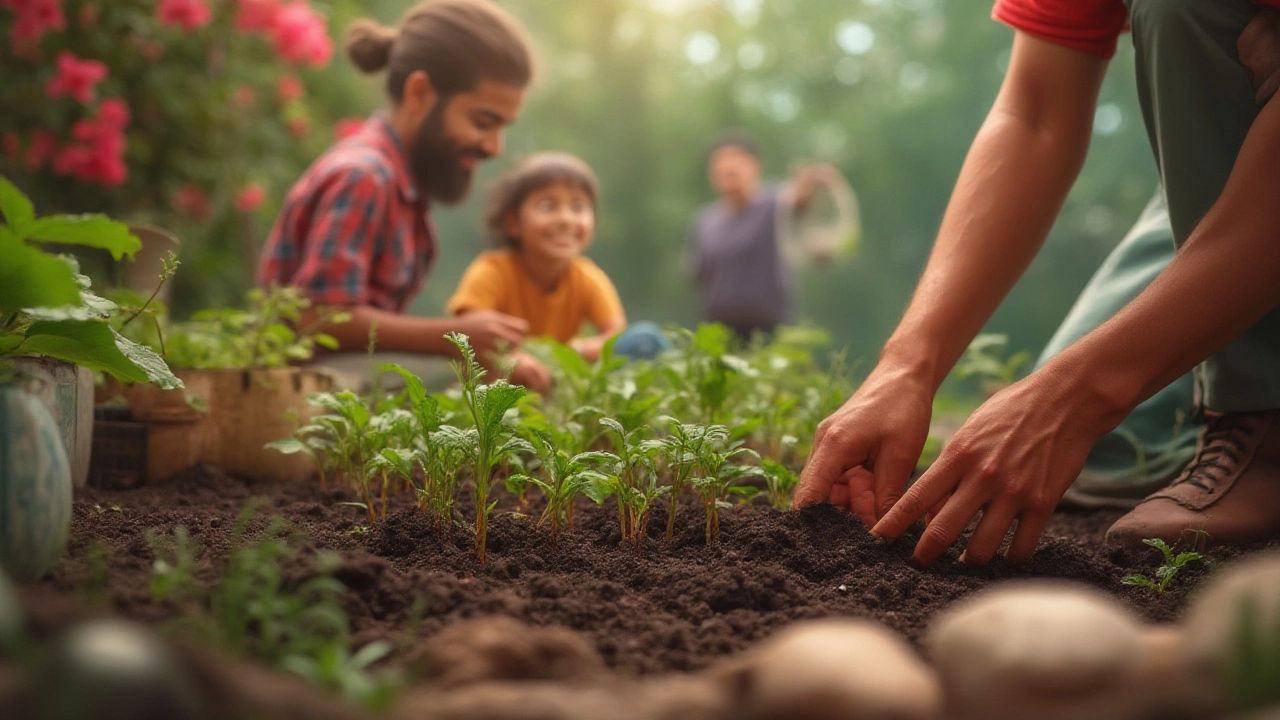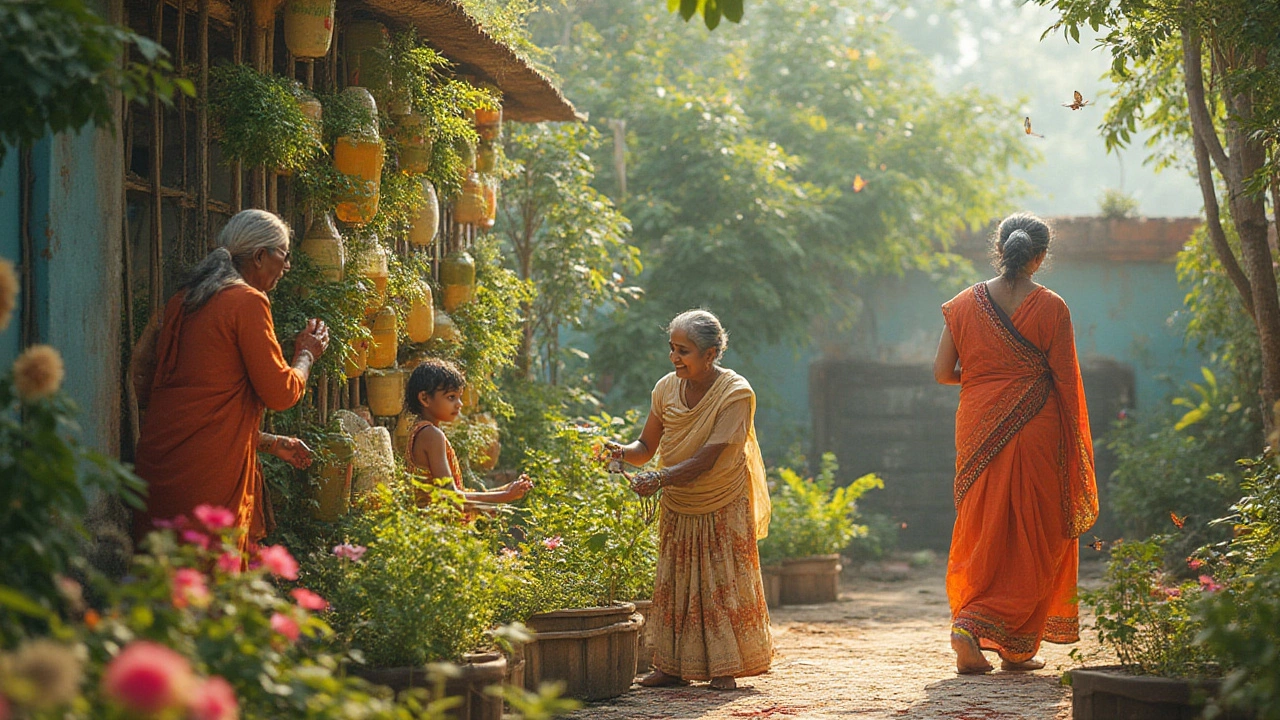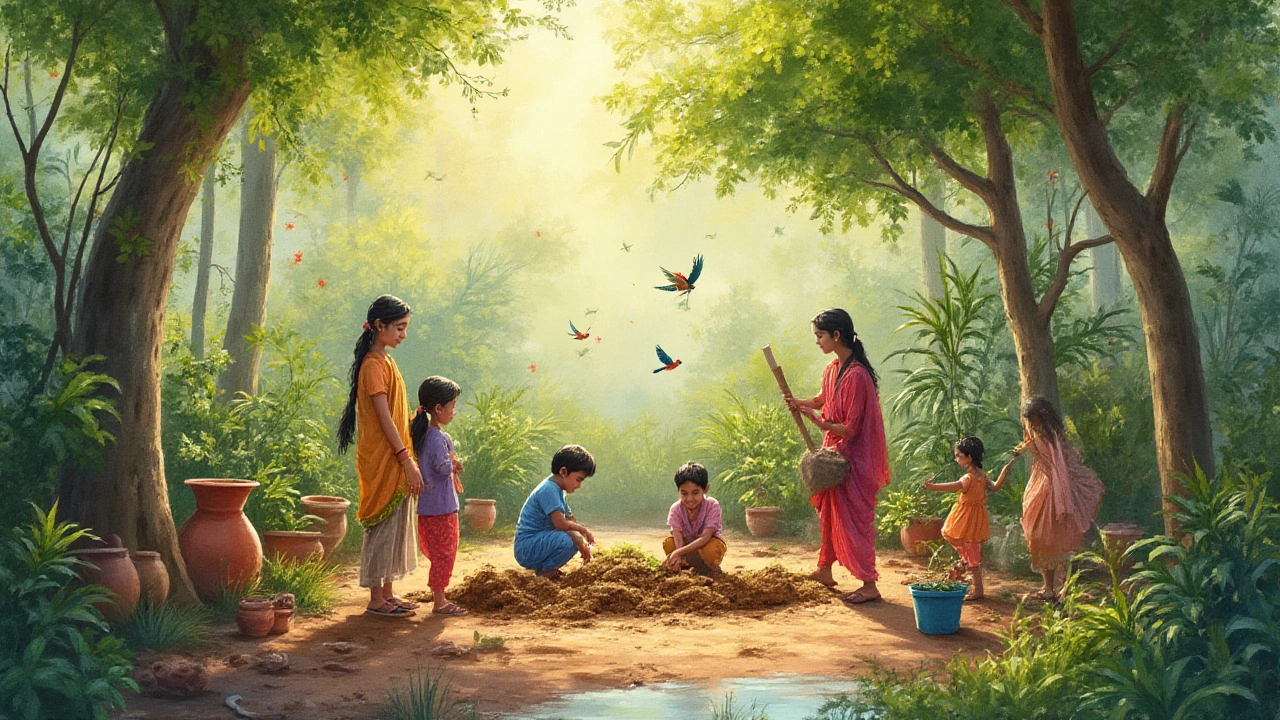Ever looked at your backyard and thought, there’s got to be a better way to garden—one that doesn’t guzzle water, burn through plastic pots, or need a truckload of chemicals? You’re not alone. Growing food, flowers, or even a few herbs without wrecking the environment is a big deal now. More people want to ditch old habits and pick up shovels that build up the earth rather than strip it down. But where do you even start if you want your garden to look good, feel good, and actually be good—for the planet and you?
Getting Started: The Foundation of an Eco Friendly Garden
First thing’s first—eco friendly gardening is all about your choices right from the ground up. Most landscapes these days use imported, thirsty plants, synthetic fertilizer, and fossil-fuel powered gear. Switching gears means caring as much about your soil and worms as you do about your tomatoes or tulips. Let’s start with your soil. Healthy, active soil feeds your plants and makes chemicals pointless. Test it with a cheap home kit so you know what’s missing. Then focus on building it up, not stripping it down. Every fallen leaf or grass clipping can turn to free plant food with composting. No fancy bin needed—a pile in the corner works. Throw in your veggie scraps, coffee grounds, and even shredded paper.
Now, think about what you want to grow. Native plants are like automatic eco-boosters. They belong where you live, so they don’t ask for much—less water, almost no spraying for bugs, and they feed local birds or bees. For example, black-eyed Susan in the US, lavender in the Mediterranean, or kangaroo paw in Australia. Skip the imported exotics and you’ll see more wildlife in weeks. Water is gold, so install a rain barrel if you can—these days, you can get one that looks like a stylish giant pot. Or, just set out buckets when it rains if you’re tight on cash. Use mulch, like straw or wood chips (just not dyed fake stuff), to lock in soil moisture and stop weeds without chemicals.
Check the gear too. Every year, about 150 million plastic plant pots end up in US landfills. Some nurseries now offer pot return programs—use them! Or hit up local plant swaps to score cuttings and seeds in a reused jar or cardboard cup. Hand tools—think trowels, hoes, and loppers—are better for the environment and work your muscles. Electric or human-powered mowers beat gas guzzlers for lawns. If you’re into numbers, look at this simple table for the average annual eco savings just by switching to some greener habits:
| Change | CO2 Saved (kg/year) | Water Saved (liters/year) |
|---|---|---|
| Composting food scraps | 125 | 0 |
| Replacing lawn with native plants (20m²) | 50 | 10,000 |
| Using hand tools instead of gas-powered | 35-75 | 0 |
| Rain barrel usage (1 barrel) | 0 | 1,700 |
You see, even small steps add up fast.

Smart Plant Choices and Chemical-Free Practices
Here’s where you can really make your mark. The plants you pick set the tone for your whole garden. Start with local native species—oakleaf hydrangea, purple coneflower, and joe-pye weed all draw bees and butterflies in the US. In the UK? Try foxglove or cowslip. Use companion planting to keep pests at bay—marigolds next to tomatoes keep aphids away, and basil near peppers pumps up their flavor. Rotate crops if you’re growing veggies—move things such as beans, squash, and lettuce to fresh spots each year. This stops soil diseases from building up and means you don’t get stuck using strong pesticides.
If bugs turn up, go natural with your pest control. Nematodes (tiny wormy critters) can clear grubs from your lawn; ladybugs chow down on aphids by the hundred. Want a homemade fix? Mix one tablespoon dish soap with one quart of water for a cheap bug spray. Sprinkle crushed eggshells or sharp sand around your lettuces to ward off slugs. Avoid chemical weed killers at all costs—they poison soil fungi and hurt pollinators. For stubborn weeds, try this: pour boiling water or vinegar on them. Or just let wild violets or clover take over a patch—those ‘weeds’ feed bees and keep soil healthy.
Fertilizer is another spot where gardens go wrong. Bags of grow-fast plant food made from fossil fuels just pollute streams and rivers. Go slow and steady with compost, worm castings, or a sprinkle of rock dust. Coffee grounds add nitrogen, but use them sparingly. You want your garden to thrive on what you can reuse or recycle. If you keep chickens or rabbits, their manure composts quickly and boosts soil. If not, try leaf mold. Just rake up fallen leaves, pile them in a shady corner, and wait six months for rich, crumbly stuff your plants crave.
Now, about water. Ditch the sprinkler and go for drip irrigation—it cuts water use up to 70%. Put soaker hoses under your mulch, or hand water early in the morning when it’s cool. Group thirsty plants (like lettuce) and drier ones (like rosemary) in different beds, so you only water what really needs it. You can turn a used plastic milk jug into a slow-drip waterer by poking tiny holes in the bottom—a trick my neighbor swears by.
If you’ve got space, plant a tree or two. Trees do heavy lifting for shade, bird habitat, and carbon storage. Even a single fruit tree pays off with apples, pears, or cherries in just a few years. Mix shrubs like serviceberry or viburnum for wildlife food and privacy.

Building a Resilient Eco Friendly Garden Over Time
Eco friendly gardens aren’t made in a weekend—they grow tougher, greener, and wilder with every season. Set up a routine. Start a compost pile and keep feeding it—banana peels, eggshells, vegetable peels, and even old tea bags. It’ll shrink down to almost nothing and give you black gold that beats store-bought fertilizer. Don’t panic if your garden isn’t perfect. Pests come and go. Flowers flop, carrots curl up. That’s all part of building a living landscape instead of a plastic-perfect one.
Mix up your plants. Intersperse wildflowers, herbs, and veggies. The diversity keeps bugs in check and builds soil. If one plant fails, something else fills the gap. Try sowing a patch of white Dutch clover along the edges—it fixes nitrogen in your soil and needs little mowing. Each season, add something new—a pollinator-friendly plant, a rain barrel, or a log pile home for toads and beetles. Before you know it, your garden buzzes with life.
Save your own seeds when flowers fade. Label them in simple envelopes. It keeps your gardening loop local. Share extras with neighbors, friends, or at a seed swap. This simple habit creates a web of food security and plant diversity right where you live.
Don’t be afraid to experiment. Ever tried growing tomatoes in straw bales? Or planting spuds in a stack of old tires? Maybe set up a little wild patch and just watch what arrives. Sometimes the best eco gardening happens when you leave a bit to chance. Watch for birds, butterflies, and pollinators. Keep a journal—or just snap photos on your phone—to see what works (and what fails). As you pick up new tricks, your garden adapts and gets easier to care for each year.
- Accept imperfections—chewed leaves mean bugs, which means birds.
- Try solar-powered garden lights for night glow without extra electricity.
- Use upturned pots or stones as shelters for frogs—natural pest eaters.
- Let seed heads dry for winter bird snacks.
- Trade cuttings—fig tree, rosemary, or mint roots—rather than buying new plants.
Bit by bit, your eco friendly garden becomes a refuge for you and everything else that crawls, flies, or blooms. It’s about working with nature, not against it. No garden is too small or too wild—and every patch counts.

